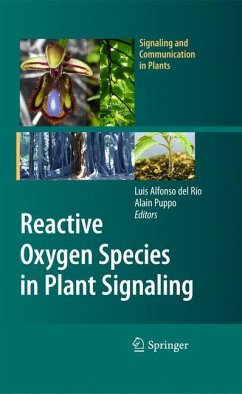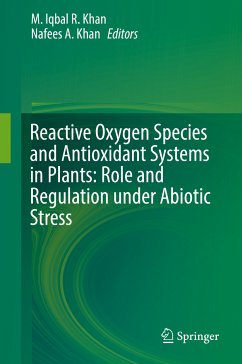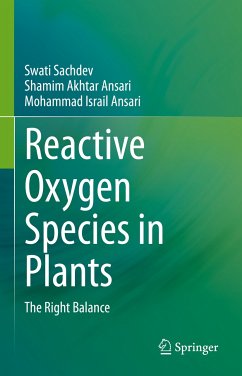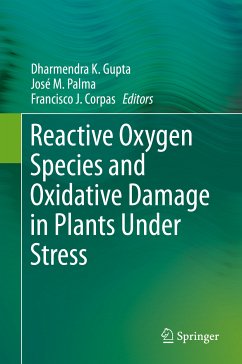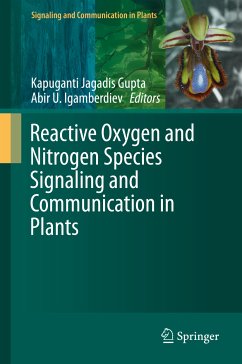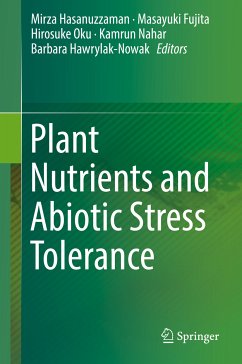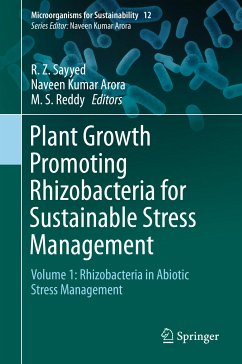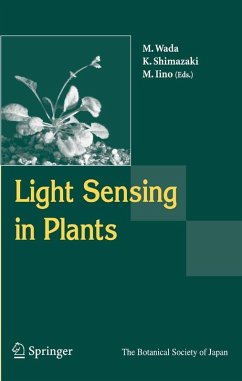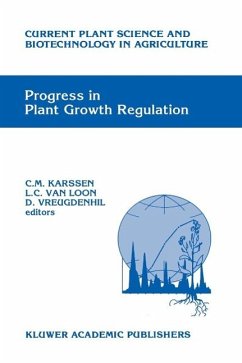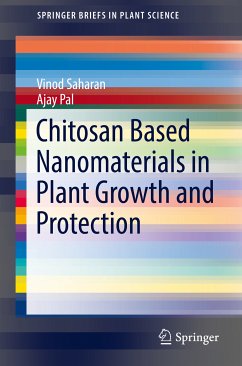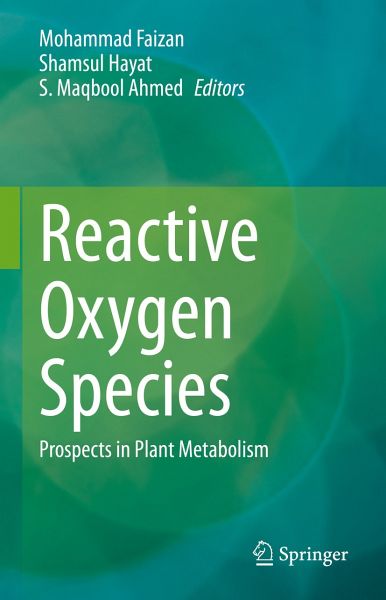
Reactive Oxygen Species (eBook, PDF)
Prospects in Plant Metabolism
Redaktion: Faizan, Mohammad; Ahmed, S. Maqbool; Hayat, Shamsul
Versandkostenfrei!
Sofort per Download lieferbar
112,95 €
inkl. MwSt.
Weitere Ausgaben:

PAYBACK Punkte
56 °P sammeln!
This edited book focuses on ROS synthesis, potential applications, toxicity, and preservations. It explores the recently proposed hormonal response and biomolecules targeted in regulation of ROS. Chapters cover resistance and susceptibility to plant pathogen, strategies involving phytoprotectants, and life span of nematode affected by ROS. This book includes a compilation of recently written, integrated, and illustrated reviews describing latest information on ROS. Chapters incorporate both theoretical and practical aspects of plant ROS. Reactive oxygen species (ROS) are key signaling molecule...
This edited book focuses on ROS synthesis, potential applications, toxicity, and preservations. It explores the recently proposed hormonal response and biomolecules targeted in regulation of ROS. Chapters cover resistance and susceptibility to plant pathogen, strategies involving phytoprotectants, and life span of nematode affected by ROS. This book includes a compilation of recently written, integrated, and illustrated reviews describing latest information on ROS. Chapters incorporate both theoretical and practical aspects of plant ROS.
Reactive oxygen species (ROS) are key signaling molecules involved in the redox equilibrium and biological processes. In plants, ROS play an important role in biotic and abiotic stress sensing, integration of diverse environmental signals, and commencement of stress-response networks, thus contributing to the establishment of defense mechanisms and plant resilience. Critical amount of ROS is required by plants for regular operation of vital physiological mechanisms.
This book brings together a compilation of latest research work on reactive oxygen species and their emerging importance. The book is a useful read for students, researchers, and scientists in the field of agri-life sciences.
Reactive oxygen species (ROS) are key signaling molecules involved in the redox equilibrium and biological processes. In plants, ROS play an important role in biotic and abiotic stress sensing, integration of diverse environmental signals, and commencement of stress-response networks, thus contributing to the establishment of defense mechanisms and plant resilience. Critical amount of ROS is required by plants for regular operation of vital physiological mechanisms.
This book brings together a compilation of latest research work on reactive oxygen species and their emerging importance. The book is a useful read for students, researchers, and scientists in the field of agri-life sciences.
Dieser Download kann aus rechtlichen Gründen nur mit Rechnungsadresse in A, B, BG, CY, CZ, D, DK, EW, E, FIN, F, GR, HR, H, IRL, I, LT, L, LR, M, NL, PL, P, R, S, SLO, SK ausgeliefert werden.



